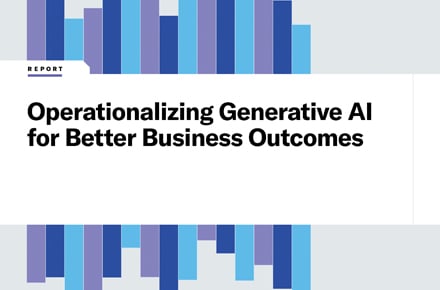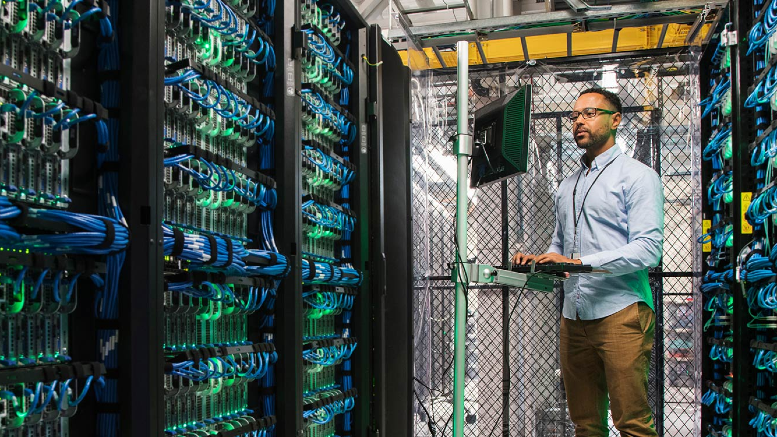Three shifts that turn university tech investments into measurable wins
junio 26, 2025 / Rudy Gonzalez
Short on time? Read the key takeaways:
- Strategic technology partnerships deliver measurable returns when investments align with institutional goals rather than chasing IT trends.
- Integrated enterprise systems addressing cloud services, data integration, systems integration and cybersecurity amplify benefits that individual solutions cannot match.
- Three strategic shifts separate successful technology investments from expensive failures: institutional mission alignment, focus on transformational outcomes and academic-focused strategic partnerships.
After years of overpromised vendor pitches, unrealized value from technology investments and underdelivered tech initiatives, can you blame any higher education CFOs who cringe when anyone mentions "digital transformation?"
Warranted or not, skepticism can block genuine opportunities for tangible outcomes that positively impact the academic and business operations of a university or college. A new generation of strategic technology partnerships proves that when investments serve institutional priorities (rather than follow IT trends) and focus on outcomes, universities can achieve dramatic operational improvements while strengthening their academic mission.
Higher education's wariness around digital transformation has solid foundations. Many institutions have experienced projects that promised big returns but delivered expensive complications instead. The challenge often stems from a fundamental mismatch: generic solutions designed for widely diverse enterprises rarely fit the unique and complex cultural and governance structures of higher education. Additionally, the special and diverse stakeholder needs of faculty, staff, administrators, students and alums add complexity that generic solutions rarely satisfy.
Focused institutions now distinguish between chasing technology trends and making strategic investments that serve their core mission. The following three strategic shifts separate successful investments from expensive lessons.
Shift 1: Align technology decisions with institutional goals
Successful universities and colleges ensure every investment directly supports their educational mission. When cloud migration, data integration, data analytics and AI initiatives specifically target student success, advancements in teaching, learning and research, as well as operational resilience, they can deliver measurable returns across key areas:
- Operational efficiency that streamlines numerous processes — such as recruitment and admissions, student registration, financial aid services, course planning and grading — can help optimize resources and reduce costs while simultaneously enhancing student, faculty and staff experiences and productivity.
- Risk mitigation through strengthened data privacy measures, cybersecurity practices and regulatory compliance with formal frameworks like FERPA, GDPR and HIPAA.
- Experience enhancement that improves the student experience through personalized AI-enabled services, 24/7 virtual academic labs and responsive digital workplace support.
- Strategic enablement and enhanced decision making that converts disparate data sources into actionable insights for enrollment forecasting, retention patterns and institutional resource allocation.
Shift 2: Think systemic solutions, not point solutions
The most impactful improvements come from addressing multiple challenges through integrated approaches. Data integration, harmonization and formal governance simultaneously support compliance requirements, ensuring data readiness and strategic decision-making. Cloud modernization enables greater institutional agility, cost optimization and enhanced security.
This effective systemic approach creates synergistic benefits where each improvement amplifies the others. Consider how innovative institutions integrate multiple capabilities:
- Cloud and workplace integration: Modern cloud infrastructure (CloudOps, DevSecOps, FinOps) combined with comprehensive digital workplace services creates seamless technology experiences for faculty, staff and administrators.
- Data governance with analytics: Establishing clear data policies, quality standards and integration centers of excellence while simultaneously deploying analytics platforms that connect dozens of source systems and enterprise applications can increase visibility and efficiency, helping institutions solve their most complex challenges.
- AI with security and risk controls: Implementing AI-powered student companions, virtual teaching assistants and AI-enabled agentic services while maintaining rigorous cybersecurity protections and responsible AI guardrails give a new competitive advantage to forward-looking institutions.
Better data integration leads to more informed data-driven decision making. It eliminates duplicated efforts, which drive more effective programs and better outcomes to attract more students and faculty, creating a culture of institutional advancement and empowerment.
Shift 3: Partner with providers who understand academia
The most successful partnerships involve collaboration and complete transparency rather than vendors dictating what institutions "must" do. Academic-focused providers understand the unique constraints and special requirements of modern colleges and universities, including complex approval processes, diverse stakeholder needs and the imperative to maintain continuous operations around the academic calendar during any project or transition.
These partnerships focus on outcomes that support fundamental institutional priorities and goals rather than generic enterprise metrics.
Real results: How CSU implemented all three shifts
California State University demonstrates what happens when all three shifts work together. With 485,000 students and 63,000 faculty across 23 campuses, CSU faced the complex challenge of modernizing critical ERP and student information systems while maintaining continuous service across the nation's largest 4-year degree-granting university system.
The financial impact:
- 33% cost savings combined with 30% performance improvement
- $4.5 million in computing cost savings plus $2.8 million in annual cost avoidance
- 90% improvement in operational outcomes
- Data access and data delivery that previously took hours now happens in minutes
Why it worked:
- Shift 1: They aligned cloud transformation and data integration with their universities’ initiatives and student success goals.
- Shift 2: They addressed multiple challenges and achieved multiple transformational outcomes through integrated solutions, enabling cloud services with data integration, systems integration and cybersecurity, rather than just isolated and piecemeal technology implementations.
- Shift 3: They partnered with a strategic partner ecosystem of Unisys, Boomi, AWS and Microsoft, who understand higher education's unique culture, mission and constraints.
This comprehensive approach included practical applications like integrating administrative systems with student information systems for real-time access, enabling data delivery that previously took hours to happen in minutes while maintaining compliance across all 23 campuses.
Making it work at your institution
While CSU's transformation demonstrates what's possible, implementing these three shifts requires a practical approach tailored to your institution's specific context and constraints. Here’s how:
Start with strategic alignment. Technology decisions should support student success, faculty productivity and operational resilience; do not chase IT fads or trends.
Design for integration. The greatest returns come from addressing multiple solutions comprising interconnected mutually dependent elements, such as cloud services, data integration, AI innovation and cybersecurity.
Choose academic-focused partners. Look for technology service providers who understand the special nature of academia, and have expertise with a diversity of cloud services, skilled data integration and analytics capabilities, AI innovation services and solutions designed for higher education's unique requirements and culture
Measure institutional metrics and outcomes. Modern institutional analytics platforms and visibility tools should leverage data from a variety of source systems. At a minimum reporting and dashboards should be in near real-time and focus on metrics like student recruitment, retention and completion/success. Similarly, visibility into academic programs, faculty teaching and research load are often sound measures of success. Insights into campus operational efficiency, utilities and campus services help institutions become more efficient and resilient. Proactively tracking cybersecurity metrics for compliance and audit purposes is essential for maintaining data privacy and institutional reputation.
The bottom line
The ROI skepticism that some higher education leaders have is an artifact of oversold and under-delivered solutions. However, colleges and universities that pursue strategic and personalized technology partnerships can simultaneously deliver financial returns and achieve mission accomplishments.
For a deeper exploration of how strategic technology partnerships can address your institution's specific challenges, from AI-enabled student experiences to virtual academic labs, read our comprehensive overview of intelligent solutions for higher education.




















